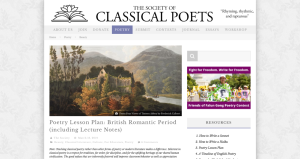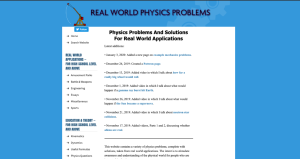Theme: Romanticism and Love Stories
Back to Top
|
 |
|
Modern Love: The Podcast
|
Language Arts |
|
Love can involve challenges, choices, and chance, as exemplified in the podcast Modern Love, which invites you to "fall in love at first listen." The podcast is produced by WBUR ("Boston's NPR News Station") and based on the New York Times column of the same name, which readers can find linked to on the About page. Modern Love is hosted by Meghna Chakrabarti, who introduces essays read by actors, singers, comedians, and other recognizable names, including Jake Gyllenhaal, Regina King, and Alicia Keys. In each episode, the guest recites an essay from the column, tackling themes such as visibility and vulnerability, intimacy in a technological world, and the power of timing. Episodes conclude with commentary from the column's readers who touch on why that essay spoke to them, as well as updates from the writers themselves who offer first-hand insight into how their stories have evolved since the essay was published. Most episodes are around 20 minutes in length. To find the full collection of more than 150 episodes (as of this write-up), visit the Archive section. Those who would like to contribute to Modern Love can learn how under Share Your Story. Readers can stream episodes at the link above, or subscribe on Apple Podcasts, Stitcher, Spotify, and Radio Public. [EMB] |
|





|
|
 |
|
Khan Academy: Romanticism
|
Social studies |
|
This resource from the Khan Academy explores 19th century Romanticism - a movement known for encapsulating "the spectrum and intensity of human emotion." Its comprehensive lessons may be of interest to educators looking to teach a unit on Romanticism, or curious readers looking to learn independently. Users will likely want to begin with the Romanticism - an Introduction section, which includes the essay "A beginner's guide to Romanticism," by Dr. Beth Harris and Dr. Steven Zucker that provides context on the who, what, where, and when of the cultural movement. From there, the unit is broken down geographically into lessons on France, Spain, England (further divided into two periods: first Blake and Fuseli, and then Constable, Turner, Martin), and Germany. Each lesson includes text, images, and videos that highlight important concepts and key contributors who brought "emotionally expressive art," to the forefront of changing societies. Units also include mid-lesson practice questions that provide a good check-in for learners. The Romanticism lesson plan concludes with a 13-question test on all of the sections. Khan Academy is a nonprofit that seeks "to provide a free, world-class education to anyone, anywhere." [EMB] |
|





|
|
 |
|
Poetry Lesson Plan: British Romantic Period
|
Language Arts |
|
High school literature and language arts teachers may enjoy this lesson plan from The Society of Classical Poets (a New York-based nonprofit "dedicated to the revival and proliferation of good, new poetry,"). The lesson plan focuses on the British Romantic Period, with the objective of instilling in students an appreciation of "some of the greatest works in English literature." The curriculum features poems by William Wordsworth (a Beethoven-era "moralist" poet), Percy Bysshe Shelley (known for his takes on love and justice), and John Keates (a self-made poet whose work contained striking imagery), and explores the meaning, technique, and interpretation of their poetry. The curriculum includes: discussion questions, lecture scripts, copies of the poems (downloadable as Word documents), and suggested assignments. Throughout the lesson plan, there are links to background resources and essays by experts on topics such as (for example) Shelly's religious views, as well as helpful definitions of poetic terms. This lesson plan is designed for students grades 11-12 and is intended for use over 2-3 weeks. The website as a whole also features other useful resources, such as poetry and essay collections, additional lesson plans and timelines, and a workshop space to get feedback on "poetry-related questions." [EMB] |
|





|
|
 |
|
Crushes: Stories About Scientists in Love
|
Science |
|
Readers looking to indulge in authentic and amusing love stories should check out Crushes: Stories About Scientists in Love from The Story Collider. As the introduction to the show notes, we're chemically programmed for crushes. The piece introduces two stories where science and crushes collide. First, you'll learn about Devon Kodzis, a zoologist and Master of Biological Sciences student whose love of animals was only outmatched by her love for her now husband. Then, you'll learn about Meisa Salaita, a chemist whose chemistry with her classmate was evident. Readers can enjoy these tales of love in the world of STEM by listening to the audio version (which is just under 40-minutes long) or reading the transcripts of the two stories. The stories were published in November of 2019 on The Story Collider, a nonprofit dedicated to bringing readers and listeners "true, personal stories about science," since its launch in 2010. The Story Collider seeks to demonstrate that "everyone has a story about how science has impacted them... and that those stories, whether heartbreaking or hilarious, have the power to transform the way we think about science and whom it belongs to." [EMB] |
|





|
|
 |
|
Cruel cards & loving lobsters: quirky Victorian Valentines
|
Social studies |
|
"An opportunity not to be lost. I ask you with all love sincere, if this Leap-year you'll have me Dear?" Those looking for romantic inspiration -- both whimsical and weird -- may enjoy lines like this found within Cruel cards & loving lobsters: quirky Victorian Valentines. This digital exhibition from the Museum of London explores Victorian courtship and the traditions of giving Valentines, featuring a curated collection of these cards. Users may want to begin at the link above, where they can read a 2017 blog post summarizing the historical context of valentines in London and see some highlights from the collection. These highlights provide insights on the range of valentines that were created -- from sweet to strange to "spiteful." From there, users can view the full collection by clicking on the "Collections Online" link at the bottom of the page, then selecting "See all related objects" on the left side of the linked page. This brings users to a compilation of thumbnail images of cards, which can be filtered by artist and place (e.g. Hackney). Clicking on thumbnail images that catch their eye allows users to retrieve records with information such as the card maker, date, location, and a description of the materials used to create the card. The cards offer a mixture of love and laughter, and with nearly 2,000 valentines archived, there's plenty to explore. If you enjoy this collection, you may want to view other collections offered on the Museum's website (which cover a range of topics, such as fashion and archeology). [EMB] |
|





|
|
















